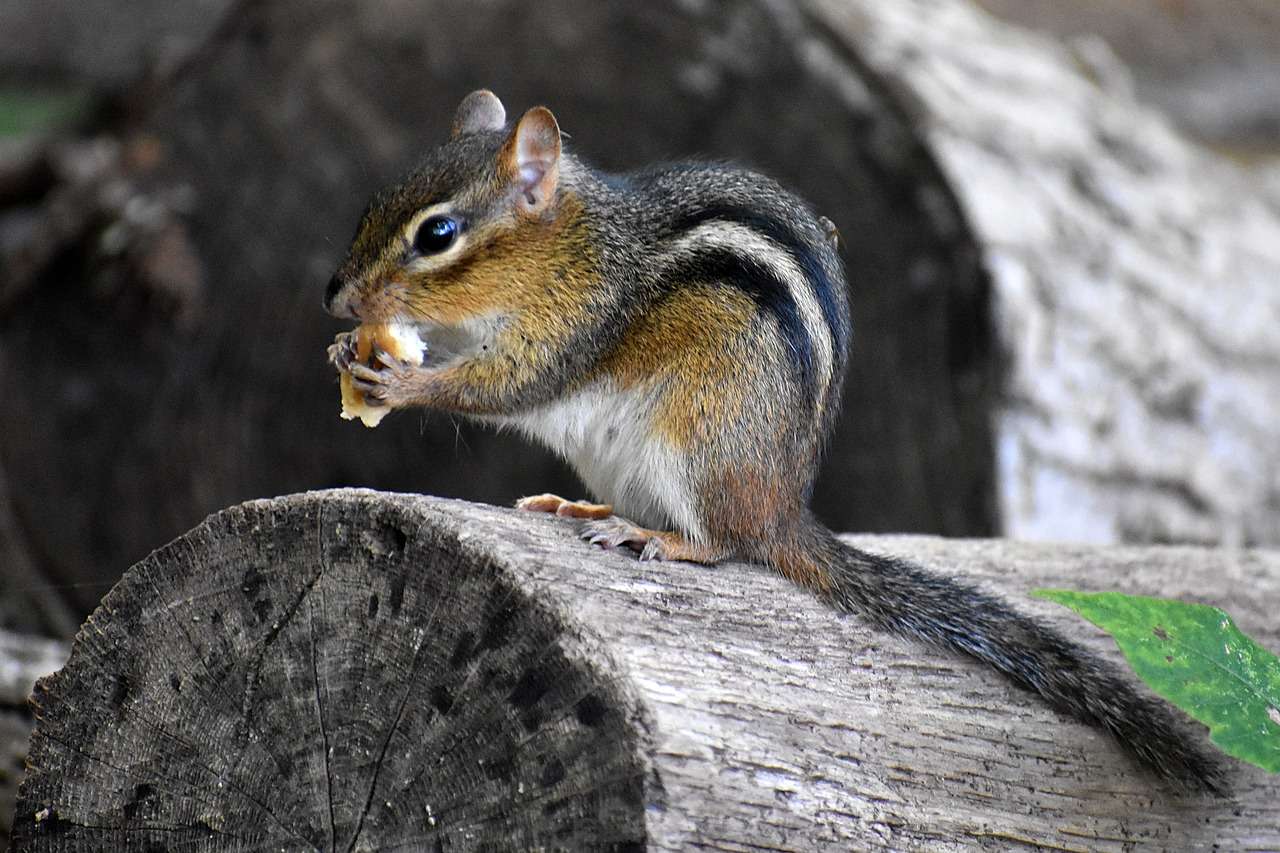Out in the Woods
- August 9th 2024
- Out in the Woods

Photo: Terry Jellerson
Chipmunks an Important Part of Our Ecosystem
By Kevin McKeon, Maine Master Naturalist
There are 25 species of chipmunks, and 24 of them live in North America. In Maine, we have the eastern chipmunk, which lives in open deciduous woodlands and anywhere else it can find logs, rocks, leaves, and stumps for cover. Small members of the squirrel family, eastern chipmunks have brown fur with black and white stripes down their backs and long tails. They make notably loud chipping sounds when alerted. They’ll climb trees to escape predators but prefer to spend most of their time foraging on the ground — caching food in their burrows throughout the year, and fiercely guarding their territory from other chipmunks.
These rather complex burrow systems may reach 30 feet long and 3 feet deep, and include a nesting chamber, one or two food storage chambers for nuts and seeds that provide chipmunks with food throughout the winter, various side pockets connecting to the main tunnel, separate escape tunnels, and even drainage tunnels for rainwater. The well-hidden burrow entrance usually measures 2 inches in diameter, and is often near a rotted stump, piles of rocks or brush, or next to a building foundation. Fresh soil is removed from the opening areas to avoid being conspicuous to predators, and the little rodents carry the soil in their cheek pouches, scattering it on the ground away from the burrow to make the burrow entrance less conspicuous.
And as wary as they may be, chipmunks are an important food source for many predators: hawks, snakes, weasels, foxes, bobcats, raccoons, rats, owls, coyotes, and as many of us know — house cats.
Active above ground in warm months, our chipmunk begins its winter escape in late October — retiring to its den chamber of its burrow system, where it sleeps for long periods of time. Not a true hibernator, it enters and exits a type of winter dormancy called torpor — best described as a restless hibernation, waking up every few weeks to eat the food it has stored. When it enters torpor, its heart rate drops from 350 beats per minute to 4 beats per minute. Its body temperature drops from 98.6 degrees Fahrenheit to a degree or so above ambient within its den, which is usually just a bit above freezing. On a very warm, sunny, late winter day, our chipmunk may venture out for a short peek at winter’s landscape but scoot back to its den to re-enter its torpor quite quickly.
The eastern chipmunk has two litters of two to five pups each year: once in the spring and again in midsummer. The young will come above ground when they are about 6 weeks old. Chipmunks are omnivores — eating both plants and animals — including seeds, nuts, berries, fruits, flowers, mushrooms, insects, worms, snails, frogs, bird eggs, and small birds. They use pouched cheeks to store and carry food.
Chipmunks live about two years in the wild and have been known to live up to eight years in captivity. As they feed on plants and fungi, they help disperse the seeds and spores. And their burrowing aids in soil aeration, recycling, and water permeation — all providing an important function in healthy habitat maintenance and diversification, especially after timber harvesting operations. So, these little critters are part of the food chain and interconnectedness of all life within a landscape environment.






